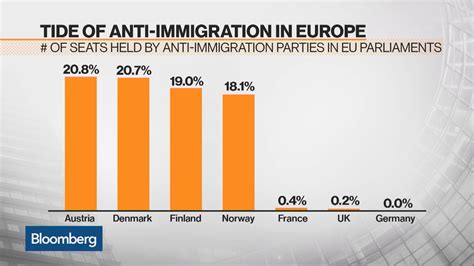The discussion around immigration sentiment in Europe is multifaceted and deeply nuanced, as revealed by various comments and opinions shared by individuals. One key aspect highlighted is the significance of sample size in surveys and studies measuring public opinion. While some questioned the representativeness of data, others emphasized the statistical validity of smaller sample sizes in gauging sentiment. This debate underscores the importance of understanding the methodology behind such research and the implications it carries.
Additionally, the discourse delved into the challenges of immigrant integration, with comments pointing out the differences between legal and illegal immigration, as well as the varying levels of assimilation within host countries. The emphasis on the importance of language, cultural integration, and societal cohesion highlights the complexities faced by nations seeking to balance diversity and unity. The question of whether immigrants should assimilate or integrate at different levels sparks thought-provoking discussions on cultural identity and societal norms.
Furthermore, economic factors emerged as a significant point of contention, with opinions ranging from the potential benefits of immigration to the strains it places on welfare systems. The interplay between population growth, declining birth rates, and the economic implications of immigration presents a complex tapestry of challenges for policymakers and society at large. Issues like financial support for families, job opportunities, and the impact on local economies add layers of complexity to the immigration debate.
The discussion also touched upon the role of xenophobia and racism in shaping attitudes towards immigration. Comments highlighted instances of discrimination based on ethnicity, religion, or nationality, underscoring the deep-seated biases that can influence public perceptions. The distinction between constructive critique of immigration policies and outright xenophobia is crucial in fostering a healthy dialogue that addresses legitimate concerns without veering into discriminatory territory.
Moreover, the comparison between immigration trends in Europe and North America provided insightful perspectives on the factors influencing immigrant preferences. While economic opportunities and societal openness were cited as key drivers for skilled immigrants, discussions also focused on the impact of xenophobia, cultural integration, and quality of life considerations. The varying experiences of immigrants across different regions underscore the importance of context and individual preferences in shaping migration patterns.
In conclusion, the analysis of comments and viewpoints on immigration sentiment in Europe offers a rich tapestry of perspectives, reflecting diverse opinions on sample size accuracy, integration challenges, economic impacts, xenophobia, and immigrant preferences. By exploring these nuanced discussions, we gain a deeper understanding of the complexities surrounding immigration debates and the diverse array of factors that shape public sentiment.


Leave a Reply